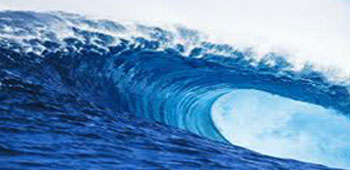 Example of aqueous solution
Sea water is a complex aqueous solution. It consists of many dissolved substances, of which sodium chloride is in highest concentration.
Example of aqueous solution
Sea water is a complex aqueous solution. It consists of many dissolved substances, of which sodium chloride is in highest concentration.
A solution is a homogeneous mixture of one substance dissolved in another so that the properties are the same throughout.
A solution is composed of a solute and the solvent. Solutions typically occur by the solute being dissolved into the solvent. The substance which is dissolved in a liquid to make a solution is called solute. The liquid in which solute is dissolved is known as solvent. Usually the substance present in lesser amount in a solution is considered as the solute, and the substance present in greater amount in a solution is considered as the solvent. The solute particles are also called ‘dispersed particles’ and solvents are also known as ‘dispersion medium’.
Examples: Sea–water, copper sulphate solution, alcohol and water mixture, petrol and oil mixture, soda water, soft drinks (Coca-cola, Pepsi etc.) and lemonade (which is a sweetened drink made from lemon juice or lemon flavoring). Salt solution is made by dissolving salt in water. So in salt solution, 'salt' is the solute and 'water' is the solvent. Similarly, the substances like sugar, ammonium chloride, copper sulfate and urea etc., which are dissolved in water to make solutions, are called 'solutes', whereas water is the 'solvent'. Solutions, suspensions and colloids differ in the size of solute particles (or dispersed particles), the size of particles being minimum in solutions and maximum in suspensions.